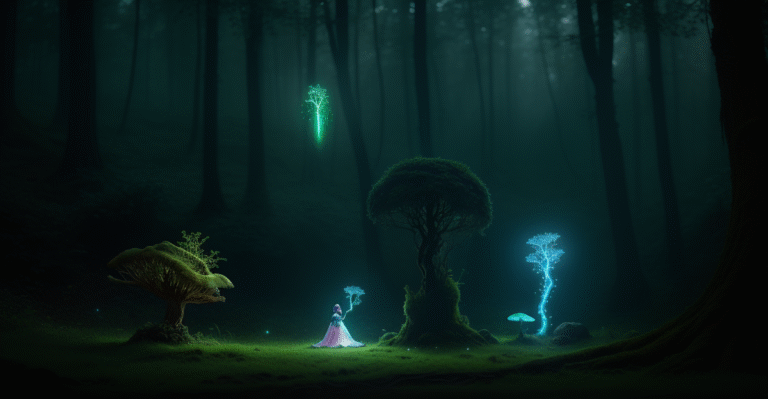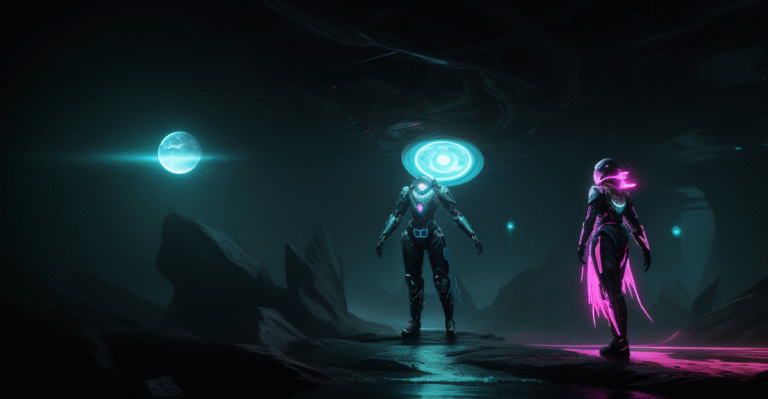
Ever had that uncanny feeling you knew a plot twist was coming before it even happened? Was it some
Ever been so engrossed in a show that you *knew* a plot twist was coming, almost as if you’d seen it before? Could that uncanny feeling, that “quantum intuition,” actually be your brain predicting the future? And could we *see* it happening with a brain scan?
Quantum Intuition: Brain Scans & Predicting Plot Twists?!
Alright, fellow pop culture fanatics and science geeks! Smash that like button if you’ve ever felt like a storytelling psychic, predicting plot twists with uncanny accuracy. Seriously, how many times have you triumphantly yelled, “I KNEW IT!
” before anyone else even suspected a thing? Today, we’re tumbling down a rabbit hole where our love for stories collides with the fascinating world of neuroscience.
Buckle up, because we’re about to explore whether brain scans can actually unveil the secret origin story of that “aha!
Predictive Processing: The Brain’s Internal Simulation
Okay, let’s get a little sciency for a moment. Our brains aren’t just passive recipients of information; they’re constantly striving to anticipate what’s going to happen next.
This is called predictive processing, and it’s essentially your brain running its own internal simulation of reality.
How It Works
Your brain constructs models of the world based on your past experiences. These models are constantly being refined by new sensory information. When reality aligns with our predictions, all is well.
But when there’s a mismatch – a prediction error – our brain revs up to update its model. This continuous cycle of prediction, error correction, and updating is how we learn and adapt to the world around us.
Predictive Processing in Everyday Life
You might not realize it, but predictive processing is happening constantly. Catching a ball? Your brain is predicting its trajectory and adjusting your movements in real-time. Understanding language?
You’re anticipating the next word based on the context of the sentence. Even something as simple as walking down the street involves constantly predicting and adjusting to avoid obstacles.
Subconscious Pattern Recognition and Narrative Structures
Now, let’s bring this back to the world of storytelling. Our brains are also incredibly adept at recognizing patterns, particularly in narratives.
The Power of Tropes
Consider this: how often have you encountered the “chosen one” narrative, the “underdog story,” or the classic “love triangle” plot? These are all examples of narrative tropes that our brains recognize almost instantly.
We unconsciously pick up on these patterns and use them to anticipate what might happen next.
Past Experiences Shape Our Expectations
Our personal experiences also significantly influence our narrative expectations. The books we devour, the movies we watch, and even our own interpersonal interactions contribute to our subconscious narrative databases.
Genre Conventions and Subversion
Genre conventions further reinforce these expectations. ) in superhero movies. This very predictability is what makes plot twists so impactful.
Neurocinematics: Mapping Brain Activity During Storytelling
This is where things get *really* fascinating. Neurocinematics is a relatively new field dedicated to studying brain activity while people are watching movies or listening to stories.
fMRI and EEG: Peeking Inside the Brain
fMRI measures brain activity by detecting changes in blood flow, while EEG measures electrical activity in the brain using electrodes placed on the scalp.
Both techniques offer valuable insights into how our brains process and react to different aspects of storytelling, such as suspense, humor, and emotional engagement.
What Neurocinematics Has Revealed
Neurocinematics studies have identified specific brain regions associated with various emotional responses to movies.
For example, the amygdala, which plays a key role in processing emotions like fear and anxiety, often lights up during suspenseful scenes.
The reward centers of the brain, such as the nucleus accumbens, are activated during moments of satisfaction or resolution.
Brain Scans and the Anticipation of Plot Twists
Now for the million-dollar question: can brain scans actually predict whether someone will anticipate a plot twist? The answer, unfortunately, isn’t a straightforward yes or no. But the potential is definitely there, simmering just beneath the surface.
Neural Signatures of Prediction
Researchers are beginning to explore the possibility of identifying neural signatures associated with successful (or unsuccessful) prediction of plot twists.
The idea is that if someone possesses a strong internal model of the story, their brain might exhibit a specific pattern of activity in response to cues that foreshadow the twist.
Which Brain Regions Are Involved?
Several brain regions are likely to be involved in processing plot twists.
The prefrontal cortex, which is responsible for higher-level cognitive functions like planning and decision-making, might be involved in evaluating the likelihood of different outcomes.
The anterior cingulate cortex, which is involved in detecting errors and resolving conflicts, might be activated when a plot twist violates our expectations.
Challenges and Limitations
There are, of course, significant challenges and limitations to using brain scans to study something as subjective as intuition and narrative anticipation. Brain activity is complex and influenced by numerous factors, not just the story itself.
Individual differences in personality, experience, and attention can all affect brain responses.
Furthermore, the technology is still relatively nascent, and more sophisticated methods are needed to accurately capture the nuances of brain activity during storytelling.
Can we truly unlock the secrets of intuition and creativity through brain scans? Or will the magic of storytelling always remain, at least partially, beyond the grasp of scientific inquiry? What plot twist prediction are you most proud of?
If you found this exploration of neuroscience and narrative fascinating, be sure to subscribe for more wild facts, weird science, and internet rabbit holes! And if you’re feeling extra generous, share this article with your friends who are also obsessed with plot twists.
Enjoyed this? Check out our YouTube channel for video versions!
Enjoyed this? Check out our YouTube channel for video versions!



